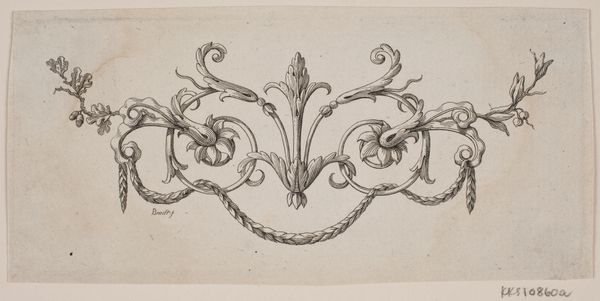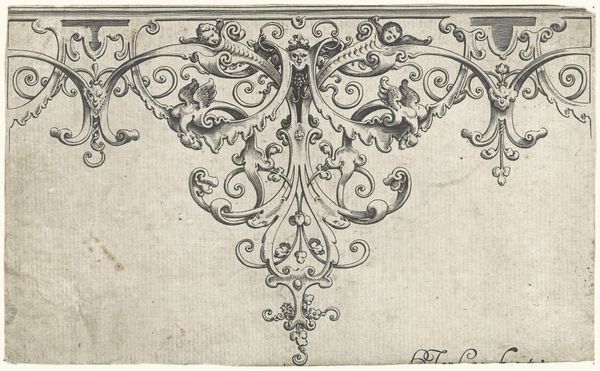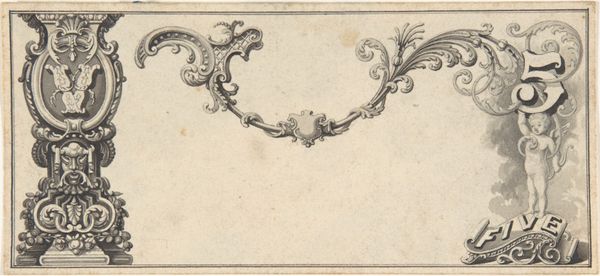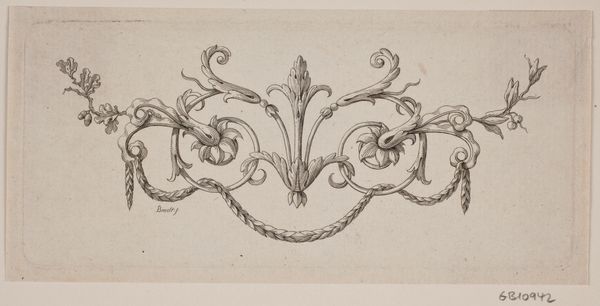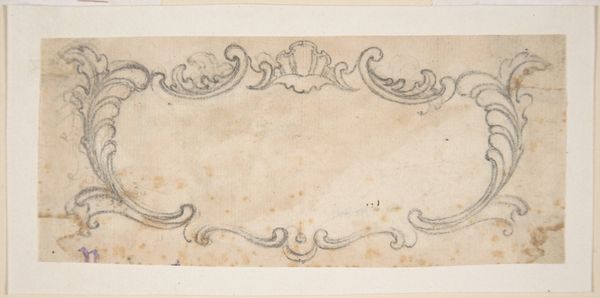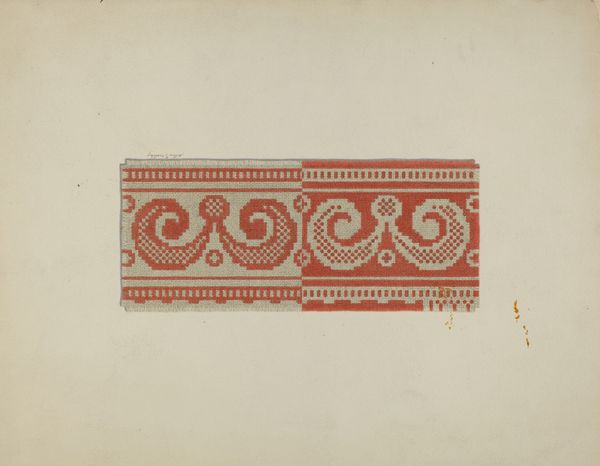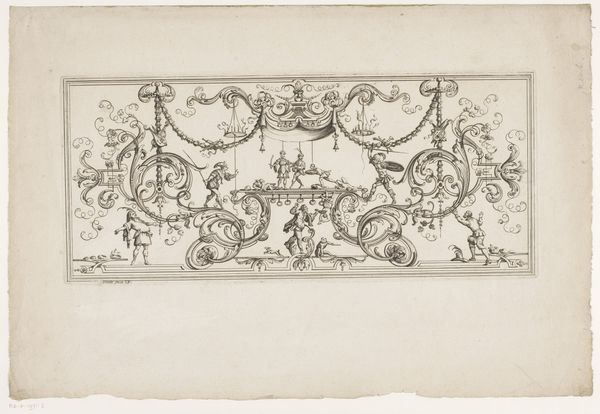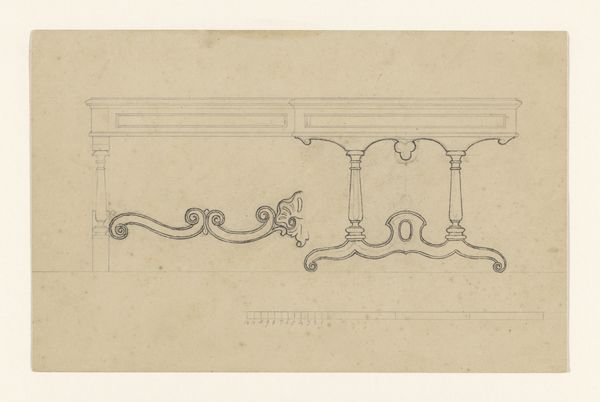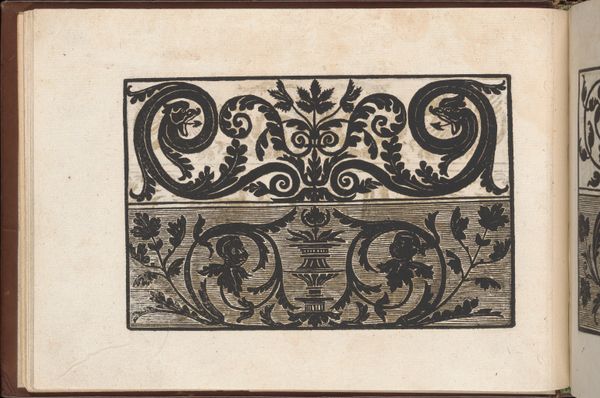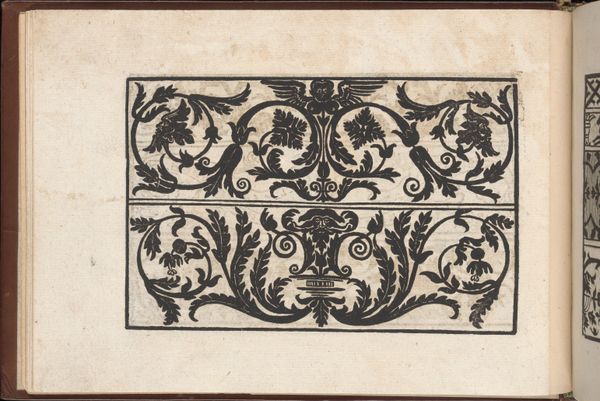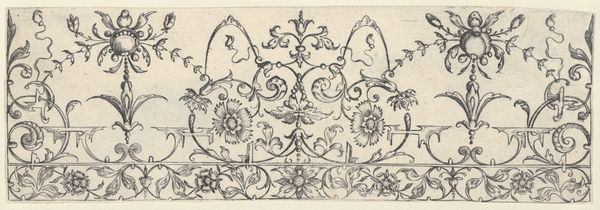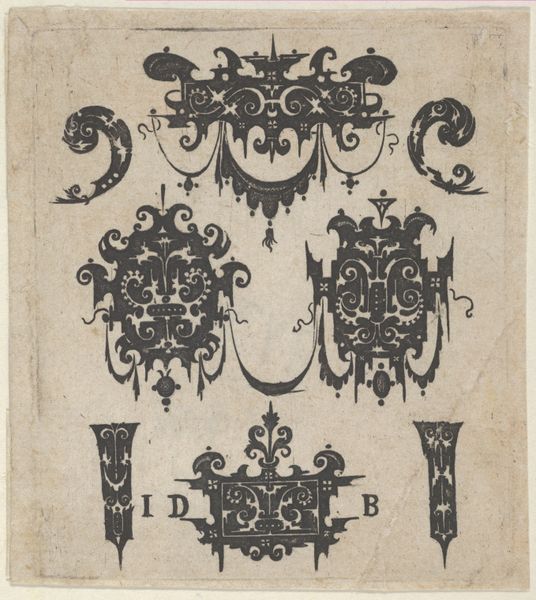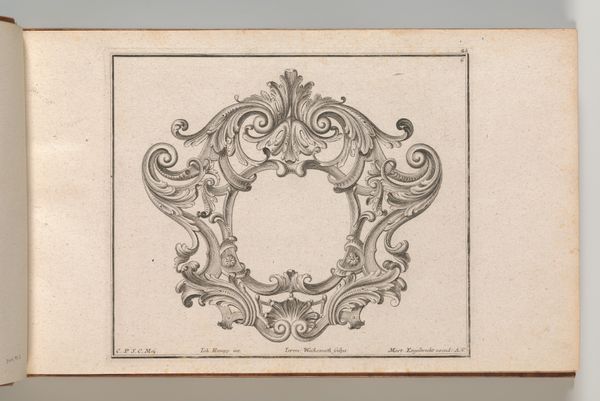
drawing, print
#
drawing
# print
#
geometric
#
romanticism
#
line
#
decorative-art
Dimensions: sheet: 4 1/2 x 10 11/16 in. (11.4 x 27.1 cm)
Copyright: Public Domain
Editor: This is J. Hulme's "Design for Panel Decoration," created sometime between 1828 and 1840. It's a drawing and print currently held at the Metropolitan Museum of Art. I find it elegant in its simplicity. What can you tell me about this design in the context of its time? Curator: It's a beautiful example of Romanticism's influence on decorative arts. Notice how the design isn't striving for perfect symmetry, but instead has a flowing, organic feel. That speaks to a shift away from Neoclassical rigidity. We must consider how the rising middle class affected design: such panels might be used to elevate a domestic interior, making it resemble the aristocratic spaces of the past, but with more accessible materials. What do you think this design says about the democratization of art? Editor: I see what you mean! It's aspirational, maybe? Wanting a bit of that upper-class aesthetic without commissioning something elaborate. Did designs like these challenge the traditional hierarchy of "high art" versus "decorative art"? Curator: Precisely. These kinds of designs blur those lines. Hulme's work circulated as a print, potentially reaching a broader audience. This makes us question: whose tastes and desires were being catered to? And how were institutions like the Met shaping our understanding of what constitutes 'art' versus 'design'? Think about the socio-political context of early 19th-century England: the industrial revolution, shifts in social power, and an expanding art market. It all impacted the purpose and reception of designs like this. Editor: That's a really interesting way to look at it, thinking about the design's role in shaping and reflecting societal changes. I hadn't considered the democratizing aspect so directly. Curator: Absolutely. Art rarely exists in a vacuum. Reflecting on these issues reveals a new depth within such works, prompting questions about art’s public role then, as well as now.
Comments
No comments
Be the first to comment and join the conversation on the ultimate creative platform.
